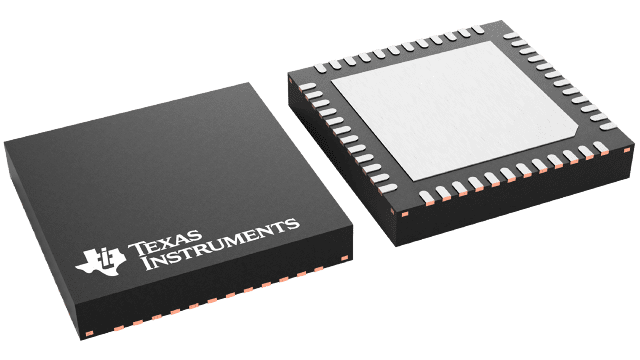Packaging information
| Package | Pins VQFN (RSL) | 48 |
| Operating temperature range (°C) -40 to 125 |
| Package qty | Carrier 2,500 | LARGE T&R |
Features for the TPS65994AD
- This device is certified by the USB-IF for PD3.0
- PD3.0 silicon is required for certification of new USB PD designs
- TID#: 3495
- Article on PD2.0 vs. PD3.0
- PD3.0 silicon is required for certification of new USB PD designs
- TPS65994AD is fully configurable dual port USB4
and Thunderbolt 4 (TBT4) PD3.0 controller
- This device can be used for USB4 host and device designs
- Supports extended industrial temperature range
- GUI tool to easily configure TPS65994AD for various applications
- Support for DisplayPort Source, Thunderbolt and user configurable alternate modes
- For a more extensive selection guide and getting started information, please refer to www.ti.com/usb-c and E2E guide
- Integrated fully managed power paths:
- Integrated two 5-V, 3-A, 38-mΩ sourcing switches
- UL2367 cert #: E169910
- IEC62368-1 cert #: US-34737-M3-UL
- Integrated robust power path protection
- Integrated overvoltage protection, under voltage protection, reverse current protection, and adjustable current limiting for source path
- Integrated overvoltage protection, under voltage protection and reverse current protection for sink path
-
USB Type-C Power Delivery (PD) controller
- 10 configurable GPIOs
- USB PD 3.0 certified
- USB Type-C specification certified
- Cable attach and orientation detection
- Integrated VCONN switch
- Integrated dead battery Rd
- Physical layer and policy engine
- 3.3-V LDO output for dead battery support
- Power supply from 3.3 V or VBUS source
- 1 I2C primary port
- 2 I2C secondary ports
Description for the TPS65994AD
The TPS65994AD is a highly integrated stand-alone Dual Port USB Type-C and Power Delivery (PD) controller for PC and notebooks applications. The TPS65994AD integrates fully managed source paths with robust protection for a complete USB-C PD solution. TPS65994AD is featured on Intel and AMD’s Reference Design for PC and notebook end equipment ensuring the PD controller has proper system level interaction in these types of designs. This feature greatly reduces system design complexity and results in reduced time to market.
